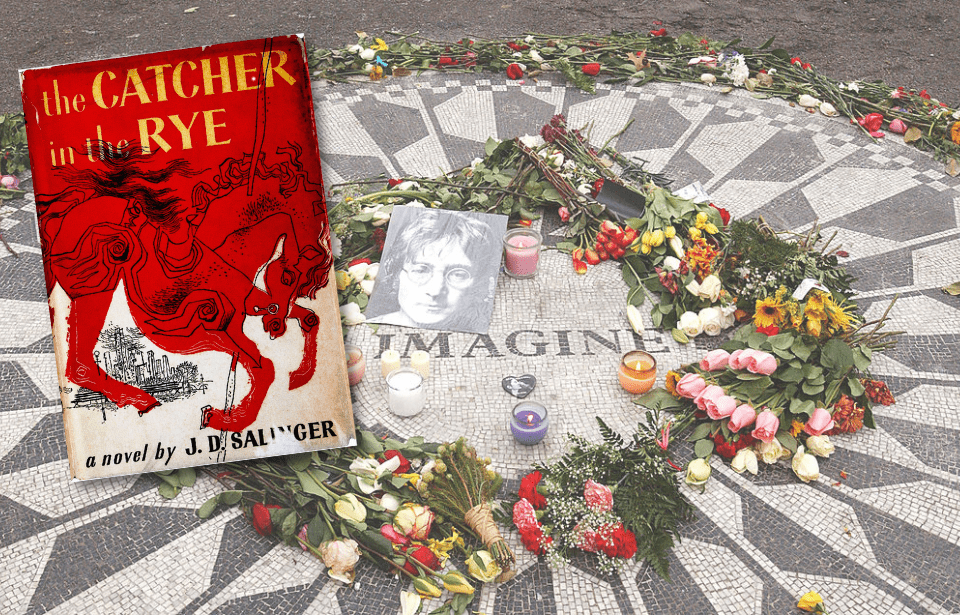
John Lennon’s life was filled with creativity, activism, and artistic brilliance. But his tragic death on December 8, 1980, remains one of the darkest moments in music history. The man who murdered him, Mark David Chapman, was obsessed with J.D. Salinger’s novel The Catcher in the Rye, and his disturbing connection to the book has fueled decades of speculation and analysis.
How did a piece of literature become tied to one of the most shocking crimes in modern history? And what does it reveal about the mind of Lennon’s killer?
The Obsession with The Catcher in the Rye
Chapman’s fixation on The Catcher in the Rye wasn’t just casual—it was an obsession. He saw himself in Holden Caulfield, the novel’s troubled protagonist, who despised what he considered “phoniness” in the world.
In his twisted mind, Chapman came to view John Lennon as the ultimate “phony.” He struggled with Lennon’s transformation from a rebellious rock star to a wealthy celebrity living in a luxurious apartment in New York City. Instead of seeing Lennon’s message of peace and love, Chapman convinced himself that the former Beatle had betrayed his ideals.
When Chapman was arrested immediately after the murder, police found a copy of The Catcher in the Rye in his possession. Inside, he had written: “This is my statement.”
Lennon’s Message vs. Chapman’s Delusions
Lennon’s music was filled with themes of love, rebellion, and self-discovery. Songs like Imagine and Give Peace a Chance called for unity and hope, not violence. Yet, Chapman, who once idolized Lennon, became consumed by his belief that the musician was a fraud.
Lennon had never shied away from controversy. His infamous remark in 1966 that The Beatles were “more popular than Jesus” caused outrage. His activism, including his protests against the Vietnam War, made him a target for powerful figures. But Chapman’s motive wasn’t political—it was personal and deeply psychological.

The Night of December 8, 1980
That night, Chapman stood outside The Dakota, Lennon’s apartment building in New York City. Earlier in the day, he had asked Lennon to autograph a copy of Double Fantasy, the album Lennon had released with Yoko Ono just weeks before.
Hours later, as Lennon returned home with Yoko, Chapman fired five shots. Four bullets struck Lennon. He was pronounced dead shortly after.
Chapman didn’t run. Instead, he sat down and calmly began reading The Catcher in the Rye until police arrived. When asked why he did it, he later responded, “I thought by killing him, I would become somebody.”
The Role of The Catcher in the Rye in Popular Culture
The novel, published in 1951, has long been linked to themes of alienation, identity, and rebellion. But Chapman’s use of the book as a justification for murder is a tragic distortion of its meaning.
Over the years, The Catcher in the Rye has been associated with several violent incidents, fueling debates about its influence on unstable individuals. However, literature alone does not create killers—mental illness, personal struggles, and societal factors all play a role.
Lennon’s Legacy vs. Chapman’s Infamy
Despite the horror of Lennon’s murder, his legacy remains stronger than ever. His music continues to inspire generations, while Chapman remains a symbol of obsession gone wrong.
Chapman was sentenced to 20 years to life in prison and has been denied parole multiple times. He has expressed remorse, but for Lennon’s fans, his crime remains unforgivable.
Honoring Lennon’s Memory
John Lennon’s legacy is one of peace, creativity, and change. While his life was tragically cut short, his impact is eternal. We choose to remember Lennon for his music, his activism, and his fearless pursuit of truth.
At poprocktee.com, we celebrate Lennon’s spirit through our collection of John Lennon-inspired t-shirts. His message of love and revolution lives on—not in tragedy, but in the music and art he left behind.
Explore our collection and find a design that connects you to Lennon’s enduring legacy.
The connection between The Catcher in the Rye and John Lennon’s murder is a chilling reminder of how art can be misinterpreted by unstable minds. Lennon stood for love and unity, while Chapman’s actions were fueled by delusion and violence.
Lennon’s music, words, and vision continue to shine. Instead of focusing on the darkness of his death, we honor the light he brought to the world.
For more about Lennon’s life and legacy, check out these sources:
